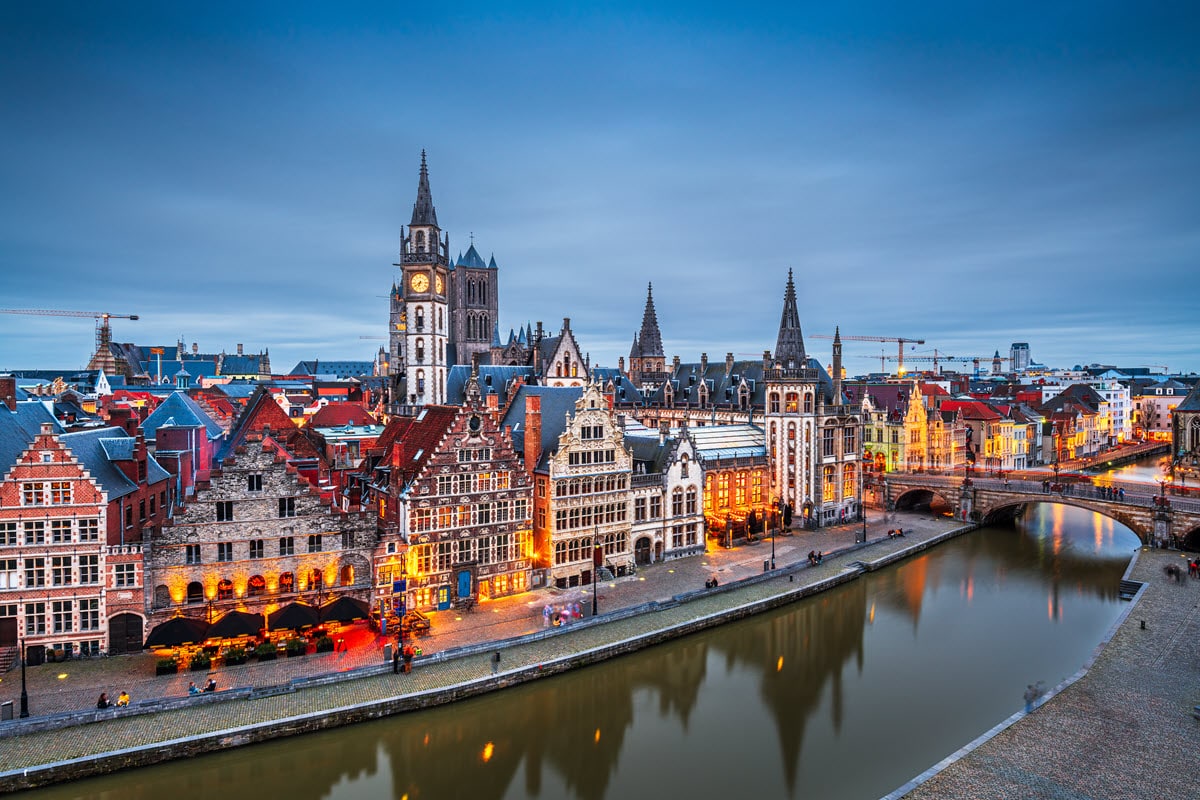Belgium is a relatively small country in Western Europe, with a population of 11.6 million people. The country is divided into the French-speaking Wallonia region in the south and the Dutch-speaking Flanders to the north. It covers an area of 30,689 km2 (11,849 sq mi) which is about a third of the size of Portugal or about the size of the U.S. state of Maryland.
Belgium is known for its beautiful medieval towns like Brugges and Ghent, decadent chocolate, a large variety of beers, world-famous waffles, and being the headquarters of the European Union and NATO. It’s also home to Tomorrowland, the world’s biggest electronic music festival.
Brussels
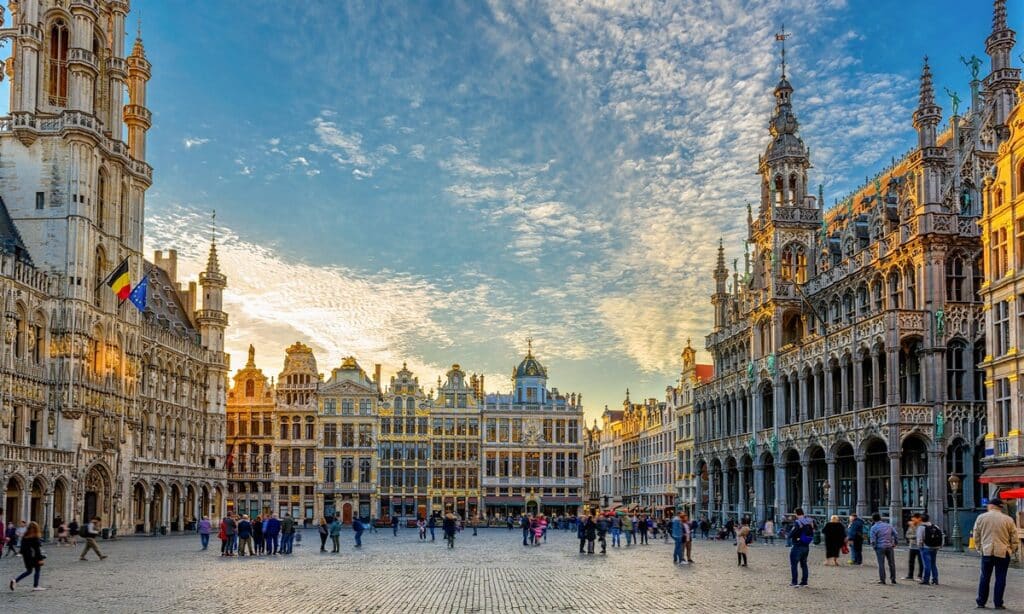
Brussels is the country’s capital but also the administrative center of the European Union (EU). So the city is often named the EU’s capital city. Moreover, it’s the country’s main economic hub, so here you’ll get more of a feel for everyday Belgian life than in the more touristy Belgian towns.
While Belgian’s main tourist attractions are found in other parts of the country, Belgian boasts excellent restaurants and cafés. It also boasts a number of fantastic art galleries and museums so visitors can still spend a good few days here.
La Grand Place in Brussels
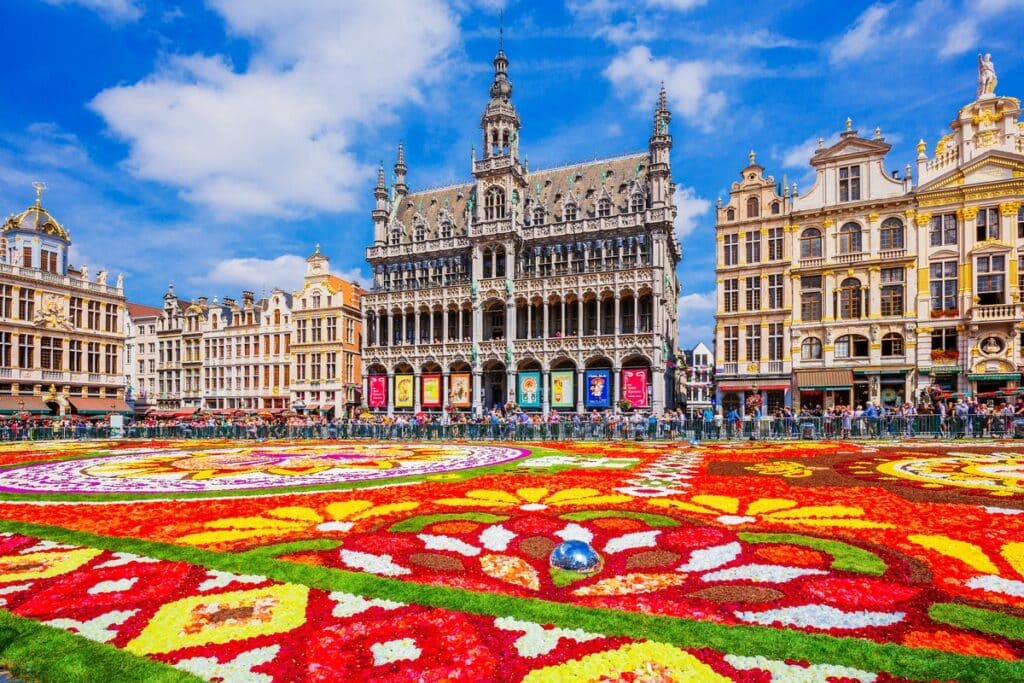
The Grand Place is also known as the Grote Markt in Dutch. It’s one of Europe’s most beautiful squares and architectural gems from the eras of Baroque, Gothic, and Louis XIV. Thanks to this unique combination of styles, UNESCO designated the square as a World Heritage Site in 1998.
The history of the square date back to the time when it was a marketplace for traders to sell their goods. The streets around the square still attest to this history as they are named after food. So you’ll find herb street (Rue du Marché aux Herbes) and butter street butter (Rue au Beurre).
Bruges
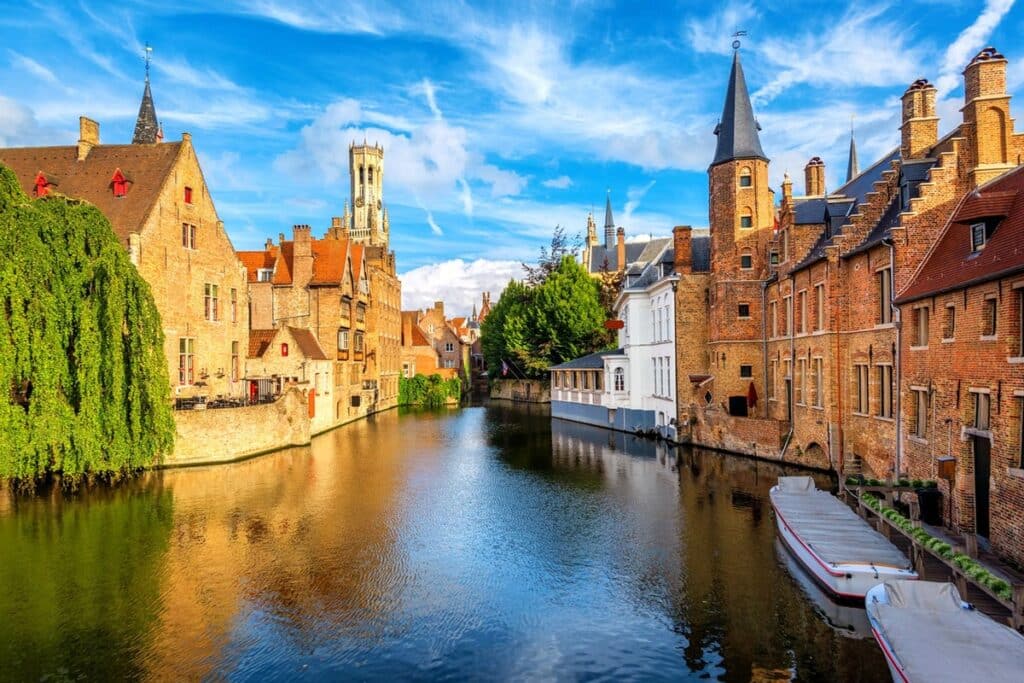
Bruges is without a doubt the country’s top tourist attraction. This picturesque medieval town with cobblestone streets and romantic canals is the perfect stop if you only have limited time in the country.
Thanks to the car-free and compact city center, Bruges can easily be covered in a day, although you’re recommended to stay a few days to soak up the town’s romantic atmosphere.
Be sure not to miss out on seeing the main square with the belfry, the Basilica of the Holy Blood, and Burg Square. Then, complete your day with a trip on the canals.
Antwerpen
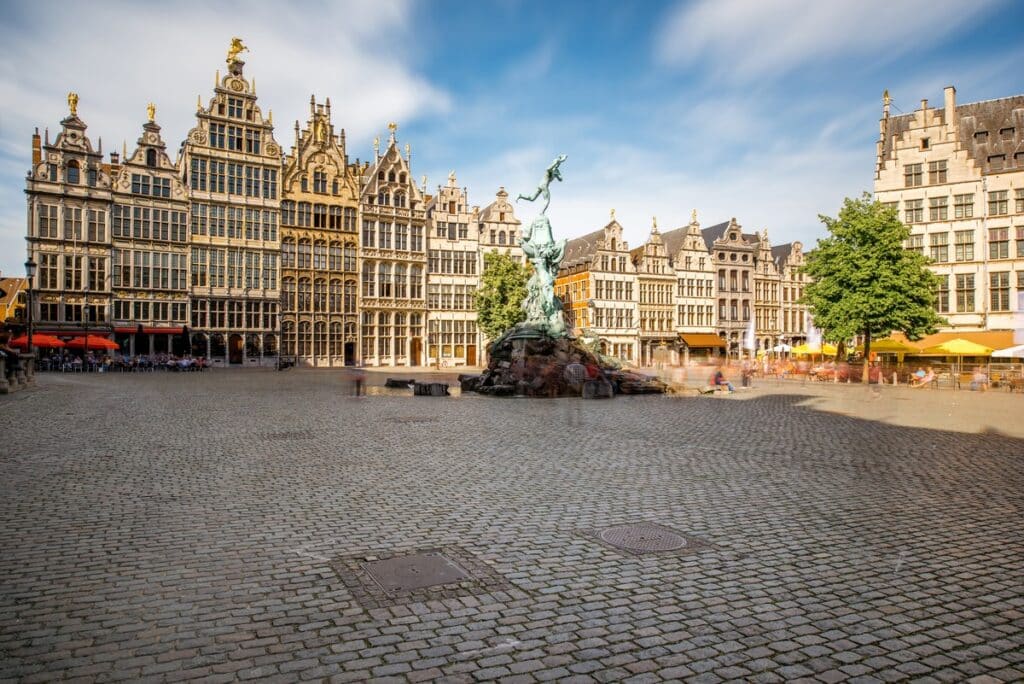
Antwerpen is the Dutch-speaking region’s cultural capital. It’s a busy port city but also the beating heart of arts in this part of the country. Historically, it was also home to some of the most renowned Belgian artists, such as van Dyck and Rubens.
If you are an art and culture lover, then Antwerpen should definitely be on top of your list of must-sees.
If you arrive by train, you are in for a special treat. The Antwerp Central railway station is one of the most impressive railway stations in Europe and is regarded as one of the most beautiful in the world.
Ghent
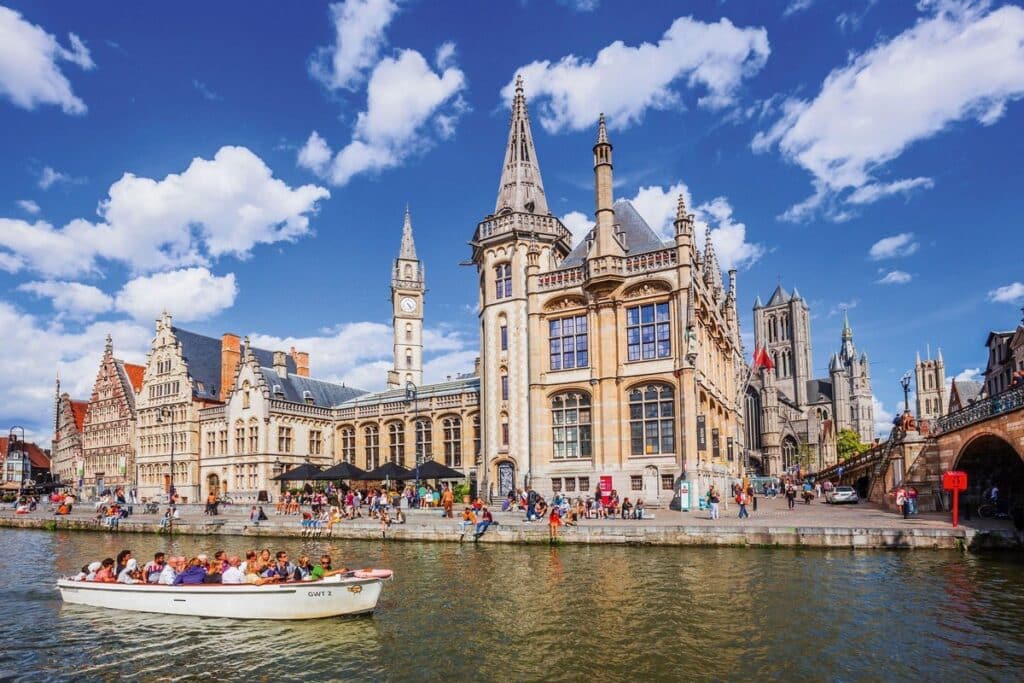
Ghent (or Gent in Flemish and Gand in French) is a picturesque old city that rivals Bruges as the country’s top attraction. It also has beautiful alleyways and romantic canals. However, as tourists usually head to Bruges, you can enjoy the atmosphere far more in Ghent.
Don’t miss out on seeing the fine old guild houses along the Graslei canal or visiting the Museum voor Volkskunde. This museum contains 18 typical Flemish cottages that you can visit. It’s the ideal way to get an insight into how like looked in this part of the world around 1900.
Chocolate
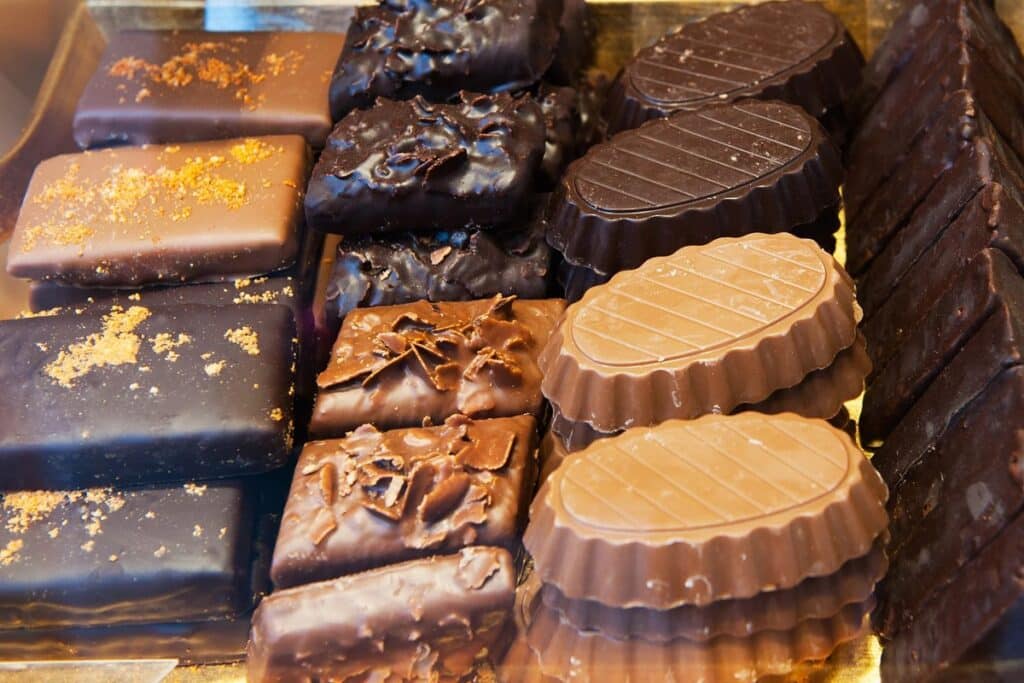
Belgian chocolate has been a major industry since the 19th century, and today it still plays a key part in the nation’s culture and economy. The climate of the country is obviously not ideal for the production of cacao, so the raw ingredients are imported. Most of the cocoa used comes from Central and South America as well as Africa.
Belgian Beer
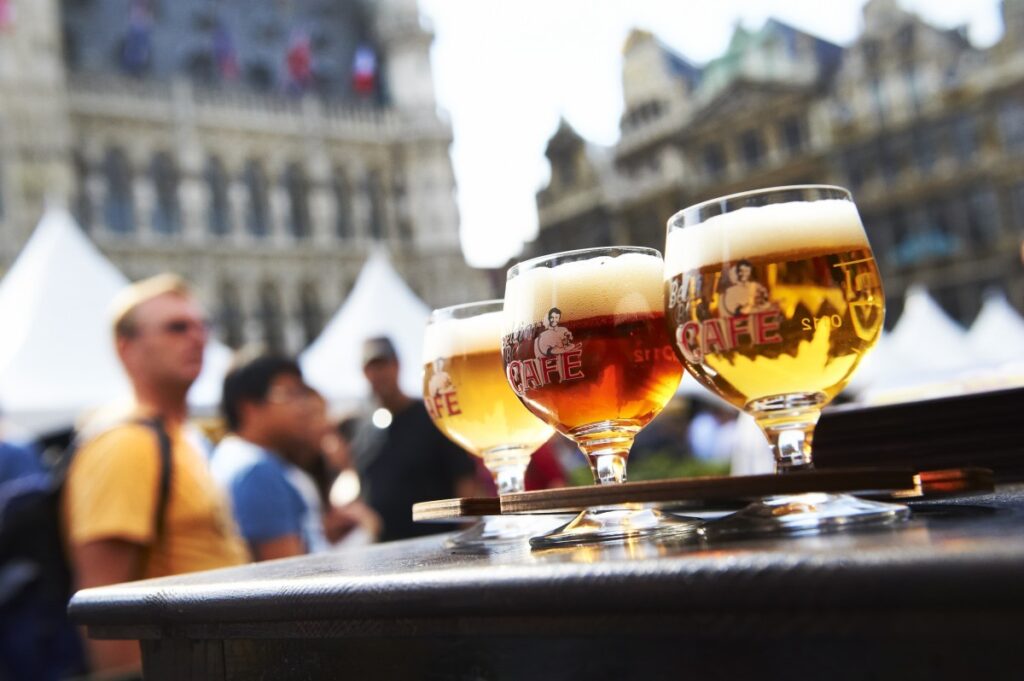
Belgian beer has a reputation around the world for being some of the world’s finest. Belgium is located in the middle of what can be called the “Beer Belt.” This is a region that stretches from the Czech Republic to Ireland.
The wide variety of brands, flavors, ingredients, and brewing processes is what makes the country’s beer so desirable. The two most popular types of beer are Abbey beers and Trappist beers.
Trappist beers are brewed in Trappist monasteries, and there are very specific guidelines that dictate whether a beer can be called a Trappist beer. Abbey beers, in turn, are any monastic or monastic style beer.
The Diamond Capital Of The World
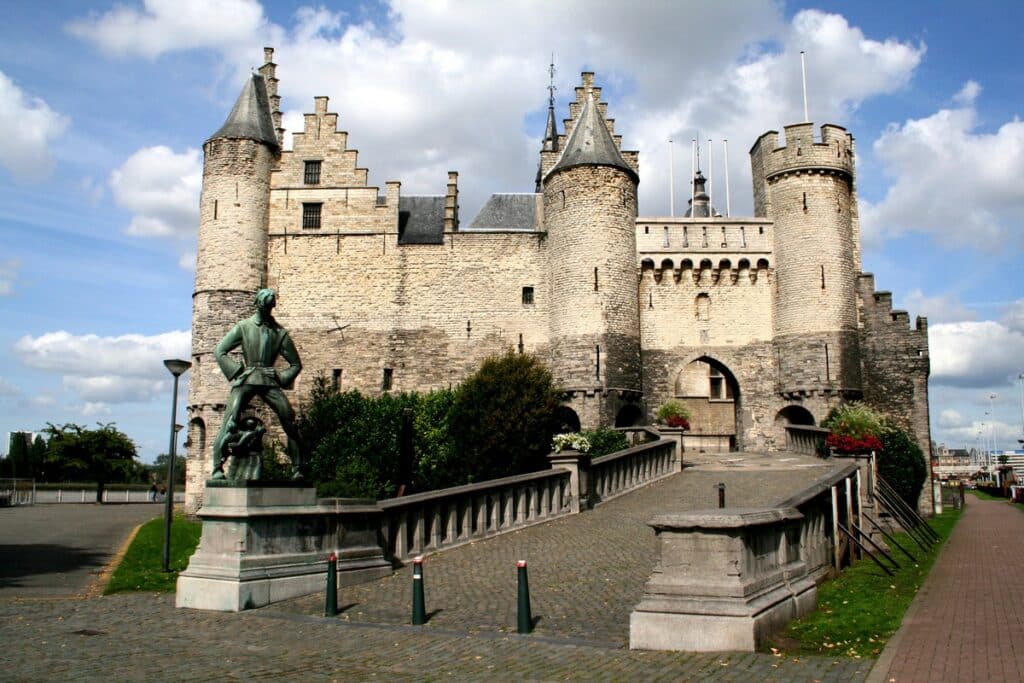
Antwerpen has retained its position as the world’s diamond capital starting at the end of the 15th century. The first recorded evidence of the diamond trade in the city dates back to 1447. One of the reasons for this was its ideal location amongst trade routes.
Today the entire diamond trade is located in an area of about one square mile known as the Antwerp Diamond District or Diamond Quarter (Diamantkwartier). This little piece of land is responsible for a turnover of $54 billion a year. The area is only a short walk from the central station.
The Atomium
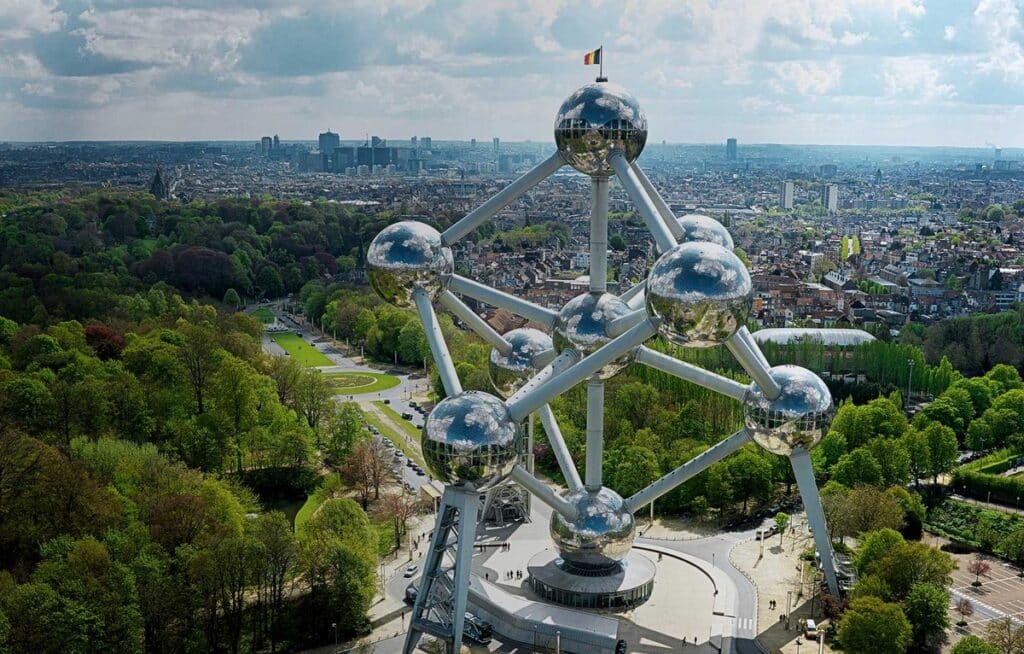
The Atomium is one of Brussels’s most iconic landmarks. The unique shape of this monument might confuse most onlookers, but it’s supposed to represent the composition of an iron crystal, magnified to 165 billion times its size.
The Atomium is 102-meter-tall (335-foot-tall) and was built for the 1958 World Fair in Brussels to symbolize a firm belief in the scientific process. It turned out to be such a popular sculpture that it was kept as a permanent fixture on the Brussels skyline. Today you can visit this building and sculpture hybrid.
Waterloo
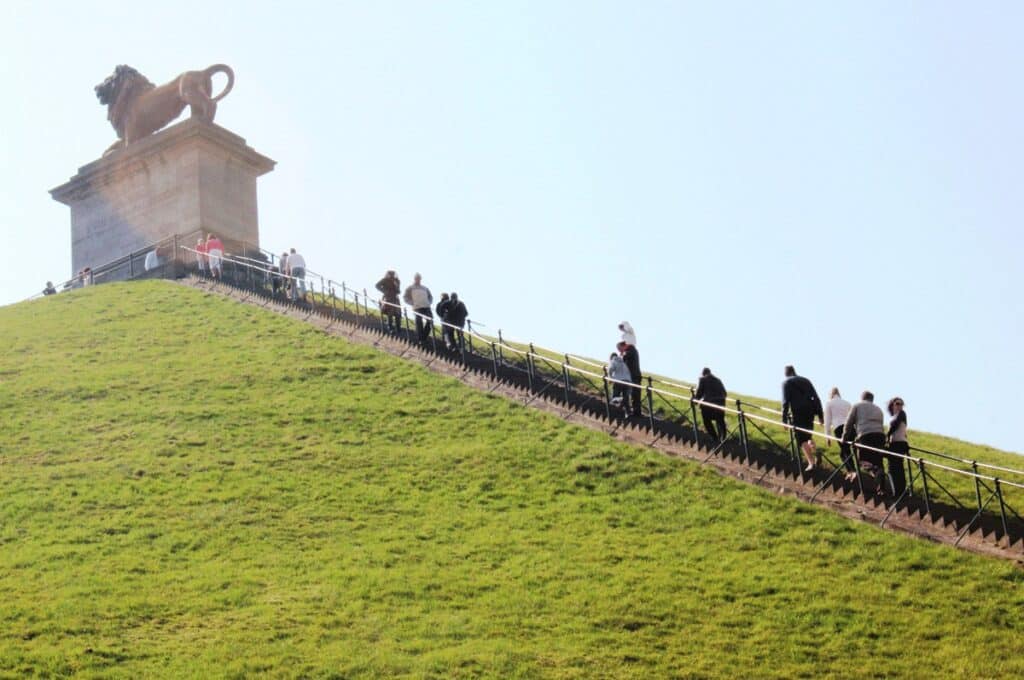
Most people know Waterloo as the spot where Napolean was defeated. This in itself makes it an unmissable stop for history buffs. However, also for those with slightly less interest in the historical battle, there’s also enough to make it well worth a visit.
One of the highlights of Waterloo is Napolean’s last headquarters. It’s a little farmhouse where he spent his last night before the start of the battle. This is also likely the spot where he made the final tweaks to his battle plans.
In 1951, the little house was converted into a museum with interesting artifacts such as a lock of Napolean’s hair.
Semois Valley
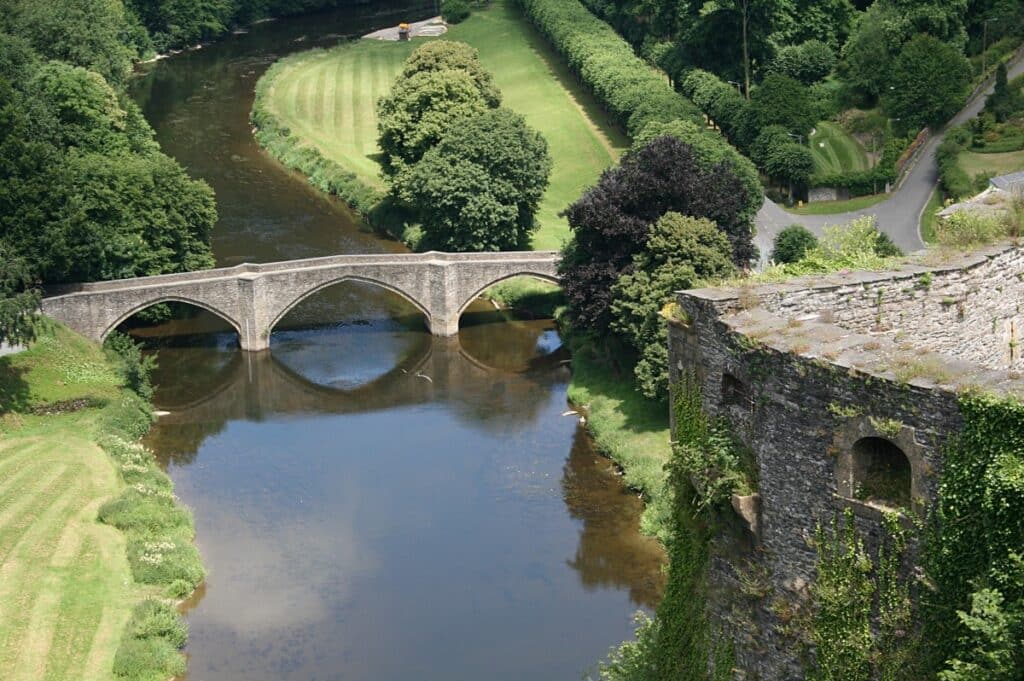
If you are looking to experience the country away from the towns and busy cities, head to the Semois Valley for a dose of beautiful nature.
The Semois valley is located in the southern part of Belgium, and it’s an area known as prime hiking territory and riverboat trips. The ideal time to visit is spring, when all the wildflowers are in bloom.
The villages of Alle, Lafore, and Membre offer some good accommodation options that will suit a variety of budgets.
Mons
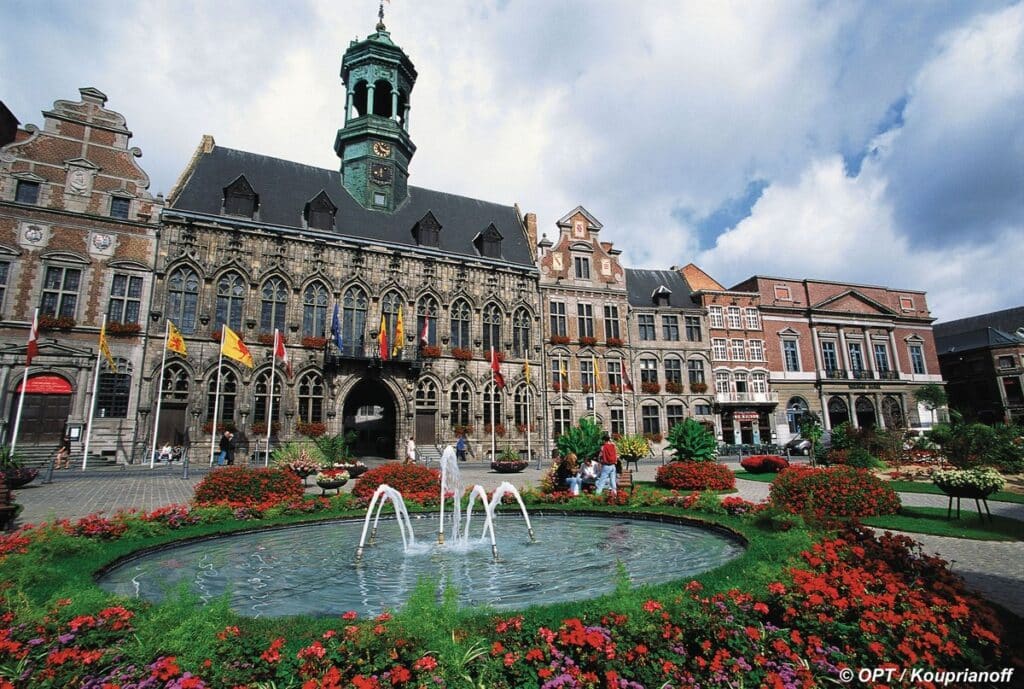
The old town of Mons (or Bergen in Flemish) is a lovely stop to add to your itinerary of Belgium. You’ll find the main square in the center lined by several typically ornate buildings that date from the 15th and 18th centuries.
Among the architectural highlights are the Toison d’Or House (1615) and the Chapel of St. George (1604).
Also, don’t forget to check out the UNESCO-listed bell tower on the hill above the town.
Belgian Waffles
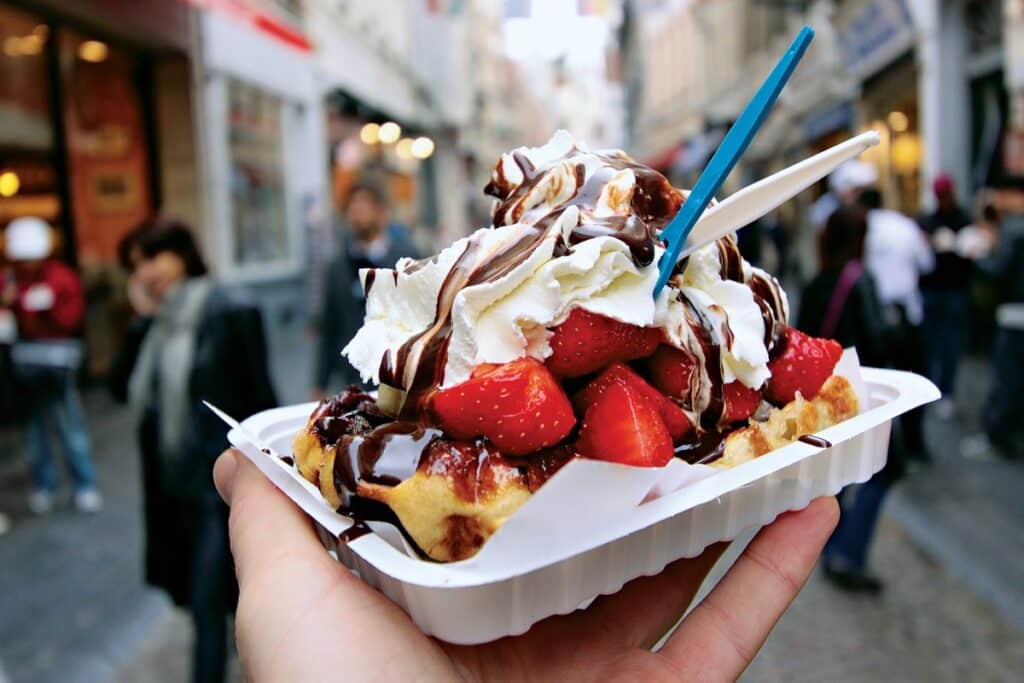
Belgian waffles are famous the world over, but few people know there’s not just one type of waffle. The first type is a Liège waffle which is more oval-shaped. It’s made out of brioche dough and contains caramelized sugar chunks. Since it’s already pretty sweet, it’s not usually topped off with any extras like whipped cream.
The second type is the square Brussels waffle which is a rectangular shape that’s topped with a lot of sweet toppings like whipped cream. This is usually the type that you may find on menus outside of Belgium.
Manneken Pis
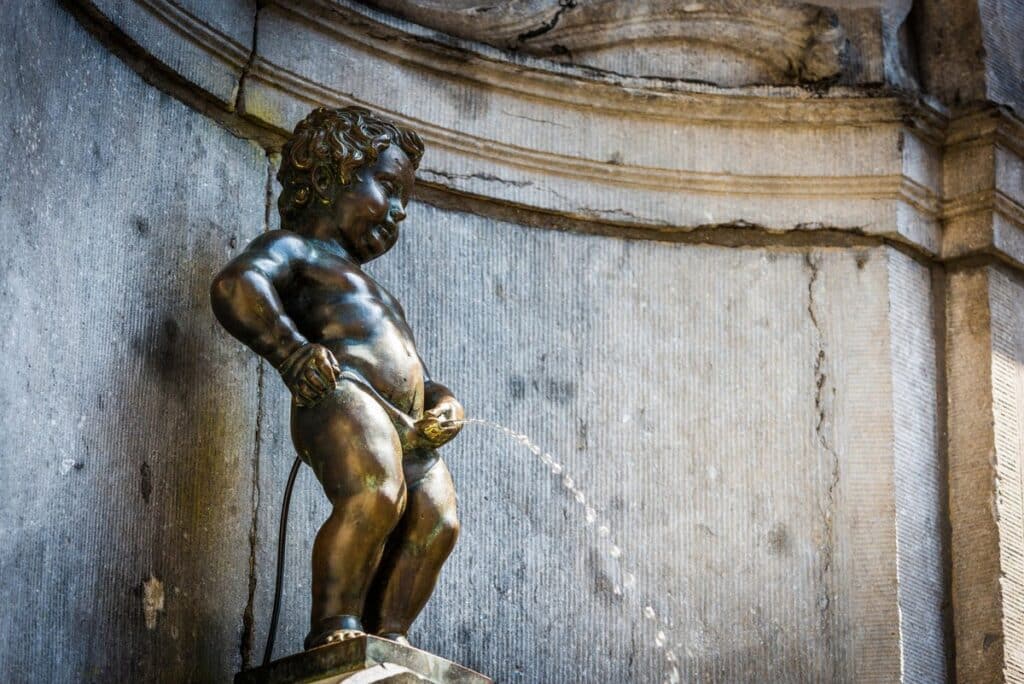
The Manneken Pis in Brussels’ has become a symbol of the city. Almost every day, tourists crowd around the little bronze fountain sculpture of a naked little boy urinating in the basin of the fountain. Quite a few people are surprised to see it’s only 61 cm (24 in) big.
The statue was put in place in 1618 or 1619. However, the statue you see today is a replica as the original can be found in the Brussels City Museum.
The little boy is often dressed up in unique outfits, and it’s said that he has over 1000 different outfits.
Tomorrowland
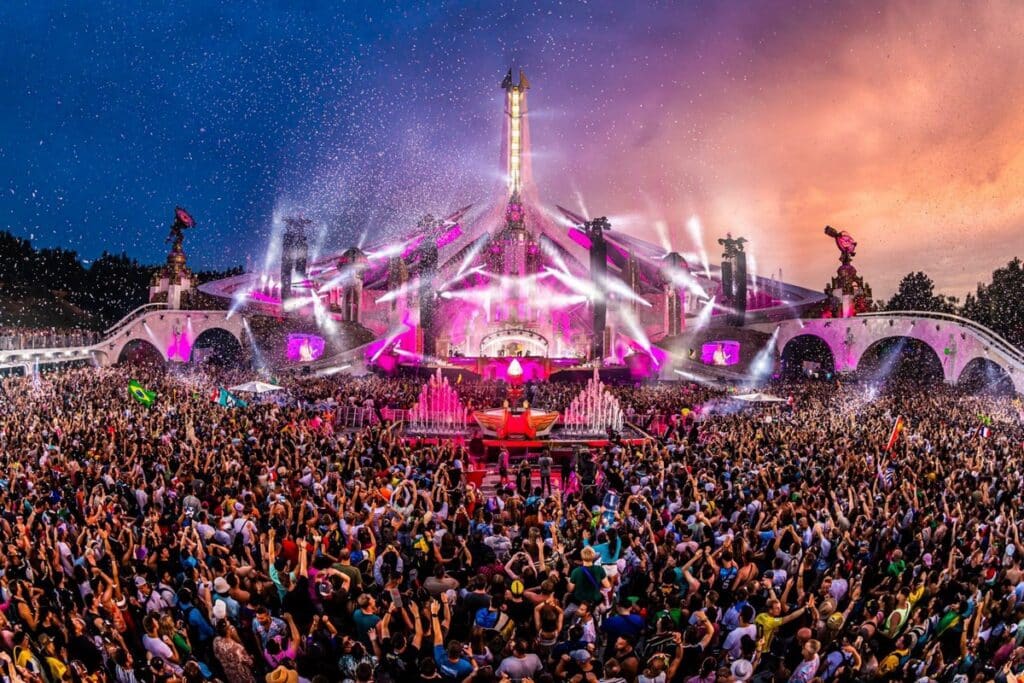
Belgium is home to some of the world’s top festivals. One of the most famous is Tomorrowland. The festival launched in 2005 with a mere 9000 people attending. Today it’s grown into the world’s largest dance festival with about 400 000 festival-goers from over 200 countries attending.
If you are considering going, it requires a bit of upfront planning as tickets aren’t easy to come by. Tickets can sell out in as little as 45-minute as soon as they become available so be sure to set your alarm for the moment they go online.
Smurfs
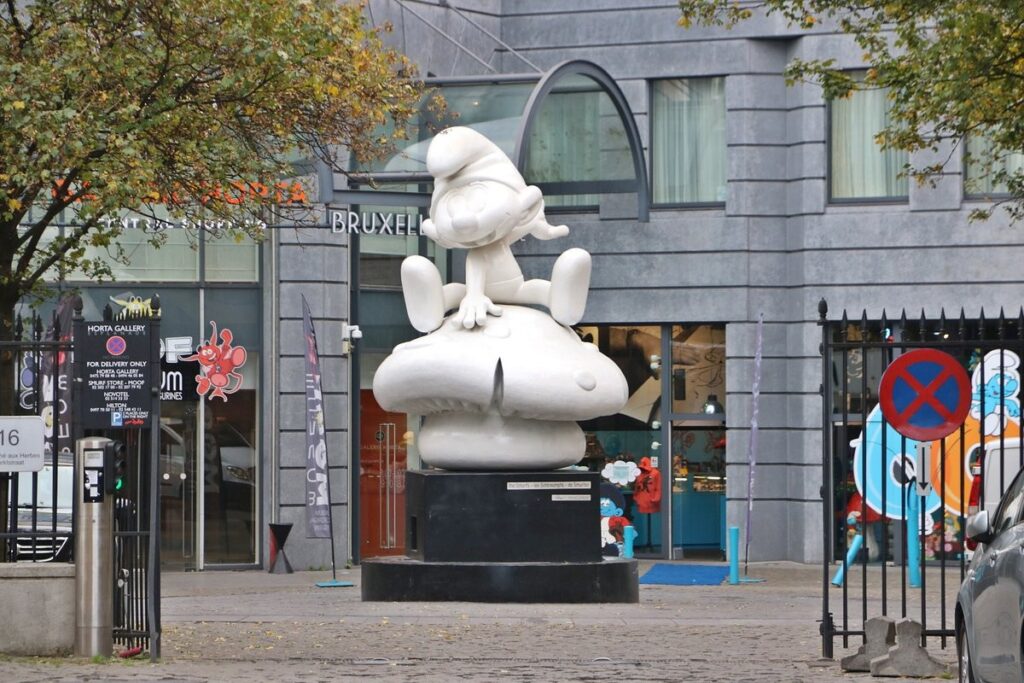
The little blue humanoid characters known as the Smurfs are famous the world over. They were first created in 1958 by the Belgian comics artist Peyo (the pen name of Pierre Culliford). Initially, they were known as Les Schtroumpfs, but later translated into Dutch, and “smurf” came about.
There are more than 100 Smurf characters, and their names are based on words that emphasize their characteristics. For example, you get “Jokey Smurf,” as he likes to play practical jokes on his fellow smurfs.
Comics about the Smurfs spawned advertising, films, TV series, video games, and theme parks.
The Flower Carpet in Brussel
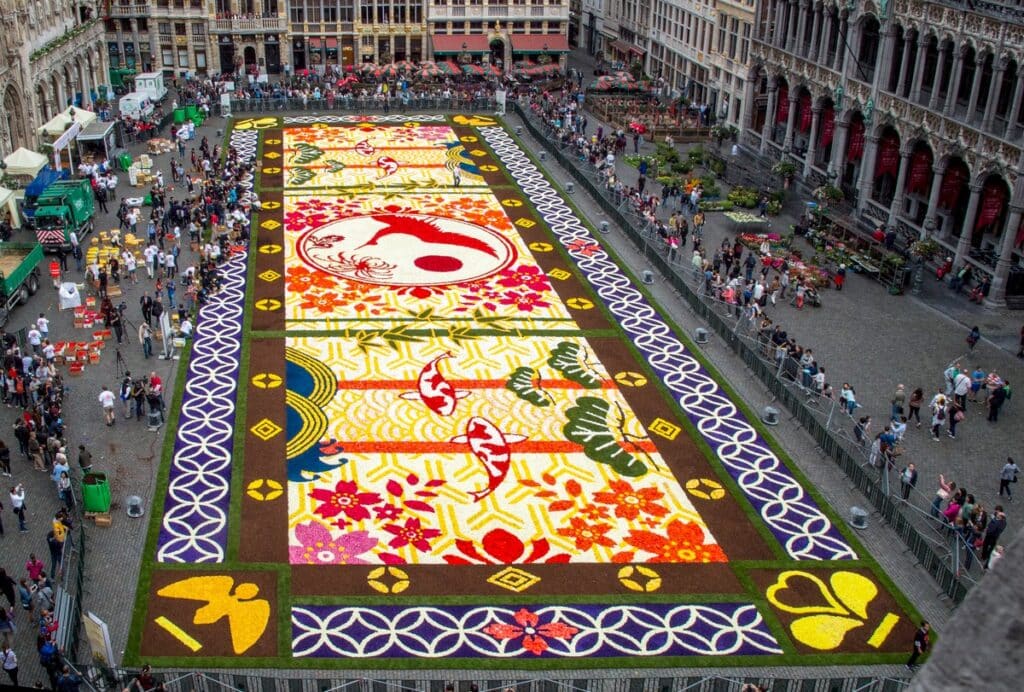
The Grand Place of Brussels gets wholly turned into a spectacle of color every two years. A hundred volunteers use thousands of begonias, dahlias, grass, and bark to transform the square into a flower carpet in less than 8 hours.
The entire flower carpet is 70 m (2296 feet) long by 24 m (78 feet) wide. The first flower carpet was created back in 1971, and since 1986 it’s been held every two years. The design of the carpet is different each year, and the theme can range from depicting countries and whole regions to specific people.
